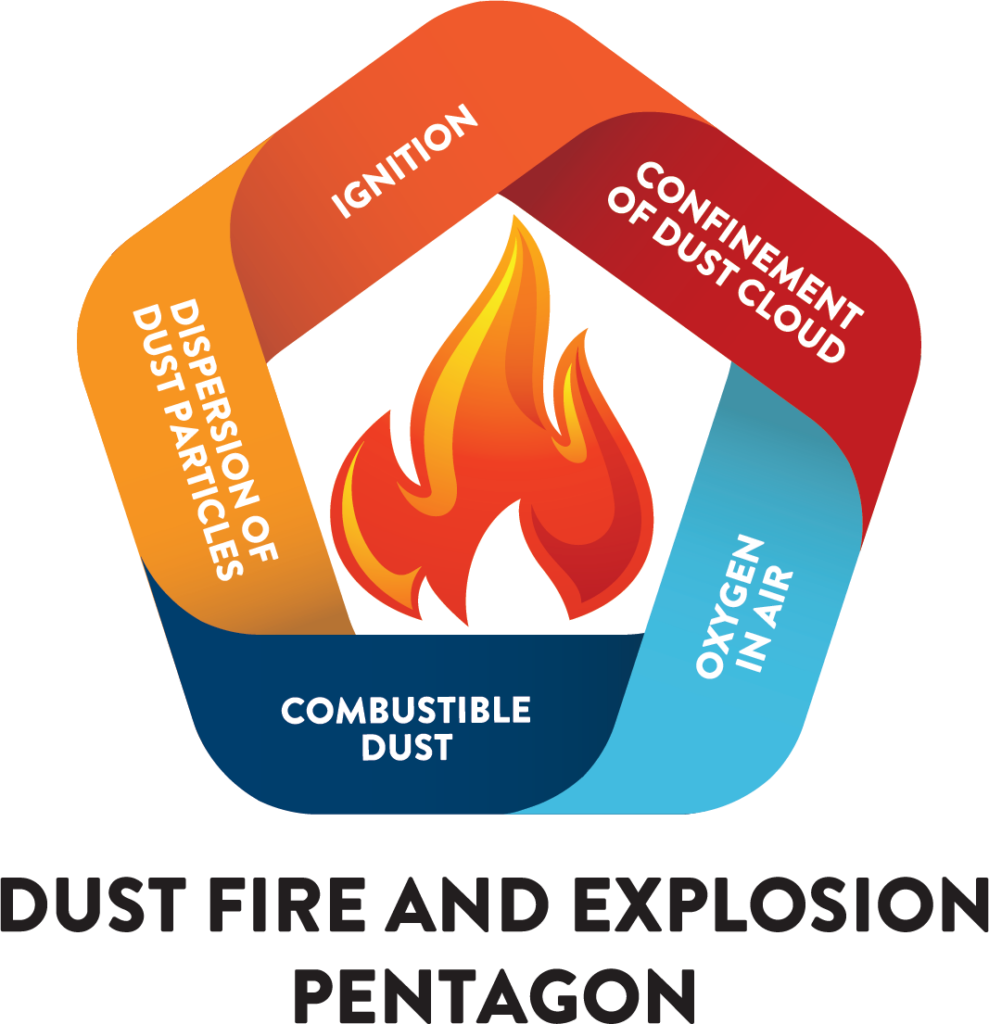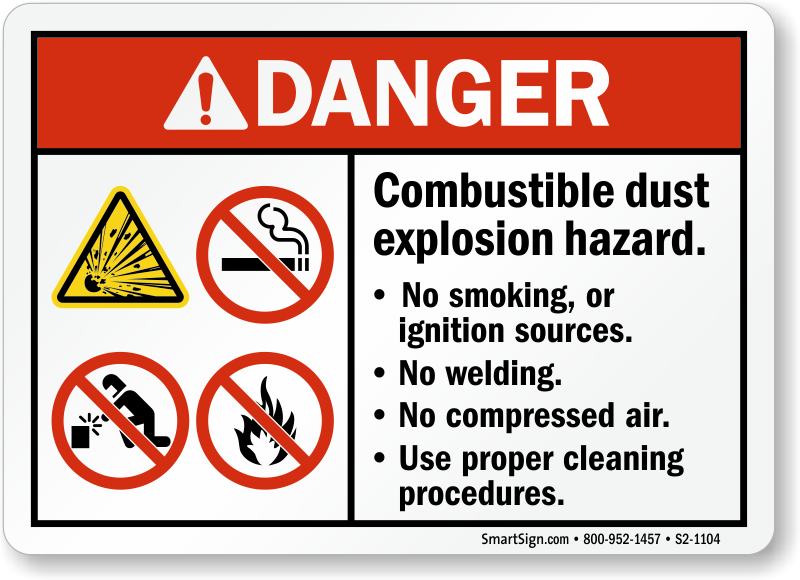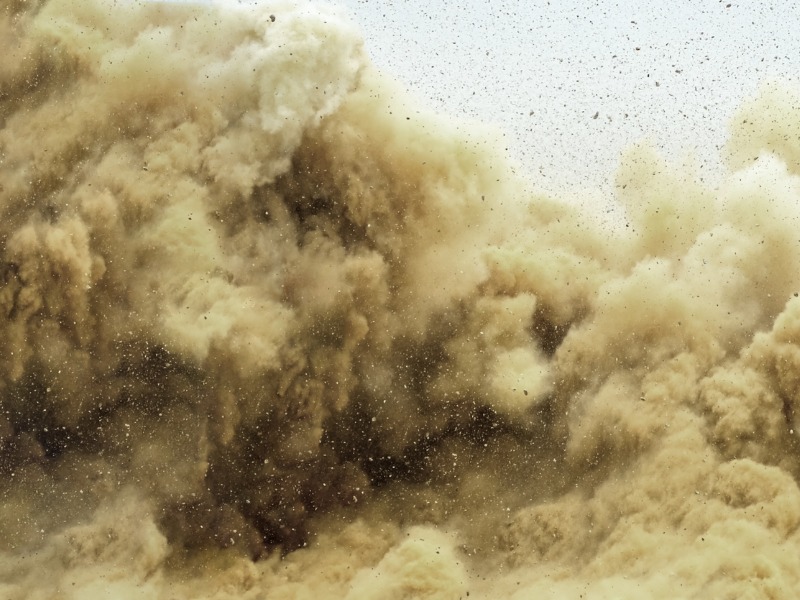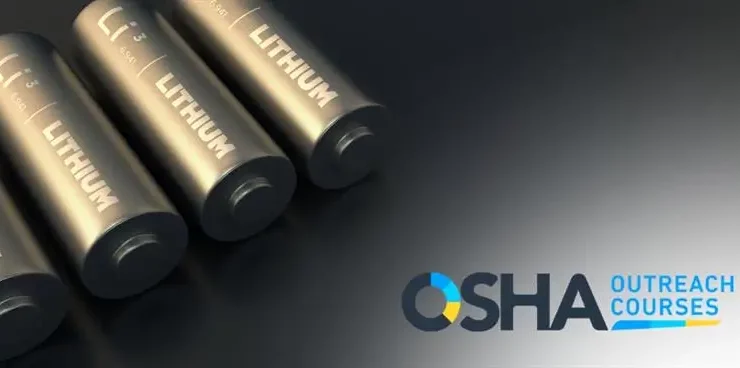COMBUSTIBLE DUST: What you must know!
COMBUSTIBLE DUST
There are many known materials that are hazardous and can also result in big explosions. Combustible dust may be minute and barely visible to the naked eye but is amongst the destructive materials. Combustible dust is the finest material that can cause a dust explosion when it comes in contact with fire and air. So any dust particle can become combustible like sugar, flour, grain, wood, metals, and even non-metallic or inorganic materials. OSHA considers cohesive dust, regardless of particle size, shape, or content as flammable. So it may result in fire, if not handled with care.
Conditions Required for Combustible Dust Explosions
A dust explosion requires these five conditions:
- A combustible dust
- Highly concentrated dispersion of dust in the air
- Presence of an oxidant, usually atmospheric oxygen
- A source of ignition
- Confined space such as in a building
Sources of Dust
Many common flammable materials can generate a dust explosion. These include coal and sawdust. Additionally, dispersion of otherwise harmless organic materials can form flammable dust clouds. These include grain, flour, starch, sugar, powdered milk, cocoa, coffee, and pollen. Aluminum, magnesium, titanium, and other powdered metals can also form explosive suspensions in the air, increasing the risk of explosion.
Dust explosions can result from activities such as transporting grain. Authorities often demolish grain silos violently, so it increases the risk of dust explosions. Coal mining leads to coal dust. Milling in flour mills leads to large amounts of flour dust. A gigantic explosion of flour dust destroyed a mill in Minnesota on May 2, 1878, killing 18 workers at the Washburn A Mill and another four in nearby buildings. Sawmills and other woodworking facilities are exposed to similar risks.
Although not strictly dust, paper particles emitted during processing are also known to pose a dust explosion hazard. Enclosed paper mills exposed to such dangers commonly make use of humidifiers to reduce the risk of airborne paper dust explosions.

Sources of Ignition
A dust explosion can be ignited through many sources. A naked flame may not necessarily be the only source of a dust explosion. OSHA training will enable workers to identify the most common sources of ignition, include:
- electrostatic discharge
- friction
- electrical arcing from machinery or other equipment
- hot surfaces
- fire
- self-ignition
However, it is not easy to determine the exact source of ignition when investigating a dust explosion, or any other explosion for that matter. Ignition is often attributed to static electricity when a source of explosion cannot be clearly identified. Static charges can be generated by external sources. They can also be internally generated by friction at the surfaces of particles themselves as they collide or move past one another.
EXAMPLES OF COMBUSTIBLE DUST EXPLOSIONS
Dust explosions may cause fatalities and injuries to employees, as well as the destruction of a whole building. The examples of dust explosions are: in 2010, three workers were killed by a titanium dust explosion in West Virginia. In 2008, fourteen workers lost their lives in a sugar dust explosion in Georgia. There were 146 fatalities, along with another 114 injuries due to a metal powder explosion in Kunshan, China in 2014.
PREVENTION OF DUST EXPLOSION
How to prevent the combustible dust explosion, the basis of this prevention is only thorough hazard assessment according to OSHA. In the prevention studies, the first thing to study is flammable dust control recommendation which includes, implementing an explosive dust inspection in the factory or building with testing of dust and its controlling program. Dust prevention also encourages the use of proper dust collection systems and filters. To avoid dust particles settling in the vents, roofs, ceilings, a complete checkup of the ventilation system is required. Always keep the working areas clean, facilitate the cleaning process, and use surfaces that minimize dust growth.

During the inspection, provide access to all the areas including, hidden ones like basements, attics, storerooms, etc., and, from time to time, check for the dust particles insides and outsides. Make sure to use a vacuum for the cleaning process and, if any source of fire is present near areas, kindly use cleaning methods that do not generate dust clouds.
Prevention of fire is another important task after finding all possible ways of combustible dust existence. Fire safety is necessary for those hazardous conditions and, the first step of preventing required to look for a source of fire in the enclosure. The source of ignition can control by using suitable electrical equipment and wiring methods. Also, control static electricity, including bonding for equipment to the ground, smoking, open flames, sparks, frictions, and mechanical sparks. Use different devices to remove foreign materials capable of igniting combustibles from process materials. Constantly keep in mind to separate the dust from heated surfaces and heating systems. Use an equipment preventive maintenance program.
OSHA GUIDELINES
OSHA also provides the guidelines for the damages and injuries which occur by a combustible dust explosion. Training of the workers is the main and the most important thing and, a supervisor is responsible to inspects the possible circumstances of having hazards at the workplace. If any injury happened, the first response is to remove the victims from the damaged areas. A fire-specialized suppression system should install with the explosion protection system. Activate the spark detection system and develop emergency plans with the emergency exit routes and finding first aids. To avoid the hazards, organizations it is the foremost responsibility of the employers to save the lives of their employees and the education and training of the workers.
The Occupational Safety and Health Administration (OSHA) sets federal standards for workplace safety and has developed regulations that apply to dust explosions. Additionally, these include the standards of that address issues like materials handling and other safety issues, such as emergency exits. Failure to comply with OSHA regulations could carry fines. In addition, to become efficient and capable of preventing and supervising such hazards as a worker, enroll in OSHA 10-Hour and OSHA 30-Hour online training courses to obtain adequate education about potential site hazards and learn essential site safety topics, such as Fire Protection, Electrical Safety, Hazard Communication and Personal Protective Equipment (PPE).
Standards set by the National Fire Protection Association (NFPA) publish by scientists and other leading experts in the fire safety field. The organization’s primary list, “Standard on the Fundamentals of Combustible Dust,” constitutes the most advanced recommendations to protect workers and facilities that encounter combustible dust.






